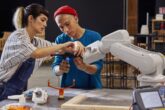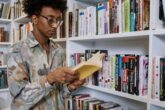
With the pandemic largely preventing on-campus education across the world over the past 18 months, educators have had to significantly rethink how to continue to teach students and work with parents when the normal approaches just aren’t possible.
Globally, advances in technology made remote teaching a possibility for most, but not necessarily all schools given the disparity of access to digital devices and/or virtual platforms. Moreover, the closure of schools was very sudden, so for many schools, there simply wasn’t time to fully prepare for a ‘what if?’ scenario.
This of course meant that teachers, students and parents had to adapt very quickly to the changing circumstances imposed by the pandemic. And of course, as the weeks and months went on, it became clear that what became known as the ‘new normal; was here to stay for quite some time. There is no doubt that the pandemic forced our approach to teaching and learning to evolve at an exponential rate and raised the question – would education ever be the same again?
Schools collaborating globally
However, alongside these significant challenges, it became clear that many amazing initiatives were pollinating across the world, instigated by the schools themselves. At Pearson, we are very proud to work with one such international school – South Breeze School in Dhaka, Bangladesh – that took a difficult situation and turned it into an inspirational and hopefully long-lasting community collaboration.
We asked Nilofar Chowdhury, Vice Principal at South Breeze School to share her experiences:
Connecting a professional learning community
South Breeze School, like many others around the world, took the initiative early on in the pandemic to connect with other schools teaching a British curriculum, in order to share ideas for effective online teaching methods. This collaboration evolved organically into a professional learning community that expanded beyond the school and to become a global project. It saved precious time and enabled the schools who took this approach to deliver an effective online experience at a faster rate.
To support this, the online professional development training the school received from Pearson prior to 2020 alongside their face-to-face training quickly became an important educational lifeline and helped them adapt their teaching and learning with the iPrimary and iLower Secondary curricula and resources they use across the school. South Breeze were keen to share this best practice with colleagues in other schools too.
Creating online communities
As well as using online professional development, the team at South Breeze also made use of educational platforms to help connect with their students. ActiveLearn, which had always been part of their classroom learning, became even more critical as a tool for creating a sense of community between their staff and students once the school was closed. It enabled teachers to deliver consistency and create an online community with their students that could replicate, as far as possible, a classroom setting.
Supporting student wellbeing
Another significant challenge that South Breeze faced was ensuring the wellbeing of their students throughout the pandemic. This also added to the pastoral requirements for teachers – to listen to and support student and their parents with techniques to tackle the challenges of the new way of learning. The focus and commitment of schools like South Breeze to ensure that this was a key priority is truly inspirational.
“As a result of working together with all our communities, we will get through the difficult time we are currently experiencing and emerge stronger, happier and more resilient.” Nilofar Chowdhury
Further reading
This article is a short summary of the full article, by Nilofar Chowdhury, Vice Principal at South Breeze School, which was published in the June edition of International School Leader magazine. With grateful thanks to Nilofar for sharing her school’s experience with us.
Sign up to receive our blog updates
Like what you read and want to receive more articles like this direct to your inbox? Subscribe to our blog and we’ll send you a fortnightly digest of the blog posts you may have missed, plus links to free resources to support your teaching and learning.

